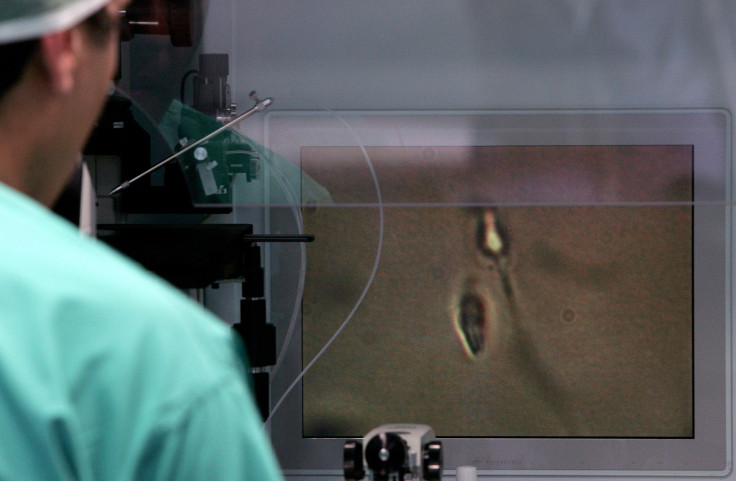Frozen Eggs Versus Fresh Eggs? IVF With Cryopreserved Donor Eggs Resulted In Fewer Live Births

The Center for Human Reproduction describes itself as the “fertility center of last resort,” since it mainly serves patients who have previously failed to have a baby, including women with older ovaries, repeated pregnancy loss, and endometriosis. A new study from the center finds the use of frozen donor eggs for in vitro fertilization (commonly known as IVF) resulted in fewer live births when compared to the use of fresh eggs. The research team investigated outcomes of the two IVF techniques during the year 2013.
However, there’s one very important caveat.
“This study looked only at egg donation IVF cycles, NOT at cycles in women who freeze/use their own eggs,” Dr. Vitaly A. Kushnir, lead author of the study, told Medical Daily in an email.
Frozen vs. Fresh
In recent years, an increasing number of women have used donated eggs or oocytes for IVF. Generally, as Kushnir explained, egg donors in the United States tend to be “carefully selected healthy, young (age 20 to 30), fertile women.” Such donor eggs traditionally have been used immediately, with the scientists creating embryos that could be transferred into the uterus of the woman who would then carry the baby to term. Any extra embryos would be cryopreserved for possible later use.
Though such practices were not uncommon in the world of assisted reproductive technology, it was not until 2013 that the American Society for Reproductive Medicine declared egg freezing techniques no longer experimental. At the same time, though, the society called for more data on the safety and efficacy of egg freezing “before universal donor oocyte banking can be recommended.”
In keeping with this request, the new study investigated data from the 2013 annual report from the Society for Assisted Reproductive Technology regarding the use of fresh or frozen donor eggs for IVF procedures. Data was derived from 380 fertility centers, which collectively performed nearly 92 percent of all IVF cycles in the U.S. during 2013.
Of 11,148 IVF cycles using donor eggs, 2,227 (20 percent) used frozen eggs, the researchers discovered. Live births resulted from 49.6 percent of the fresh eggs versus 43.2 percent of the frozen eggs. Looking at only those eggs transferred to the embryo, 56.1 percent of the fresh oocytes resulted in a live birth compared to 47.1 percent for frozen oocytes.
The reasons for the differences are unclear. The authors venture egg quality may be negatively affected by the freezing and thawing techniques. Or, a generally smaller starting number (of frozen eggs) results in less opportunity for proper selection.
However, it is important to remember this data only applies to donor eggs.
Women who freeze their own eggs in order to postpone fertility “are generally not infertile, but most are not as young/healthy as carefully screened egg donors,” Kushnir explained, so he would anticipate pregnancy rates among women who freeze their own eggs to “depend largely on their age, health, the number and quality of eggs frozen, and the quality of the IVF center/lab where the procedure takes place.”
“Therefore I think the live birth rates achieved in egg donation cycles are likely the highest possible with modern IVF technology and expect those for most women pursuing elective fertility preservation to be generally lower,” Kushnir said. He suggests women wanting to freeze their eggs be counseled about these relative odds and, more practically, he recommends a woman preserve a large enough number of eggs to have a good chance of a live birth.
Source: Kushnir VA, Barad DH, Albertini DF, Darmon SK, Gleicher N. Outcomes of Fresh and Cryopreserved Oocyte Donation. JAMA. 2015.



























